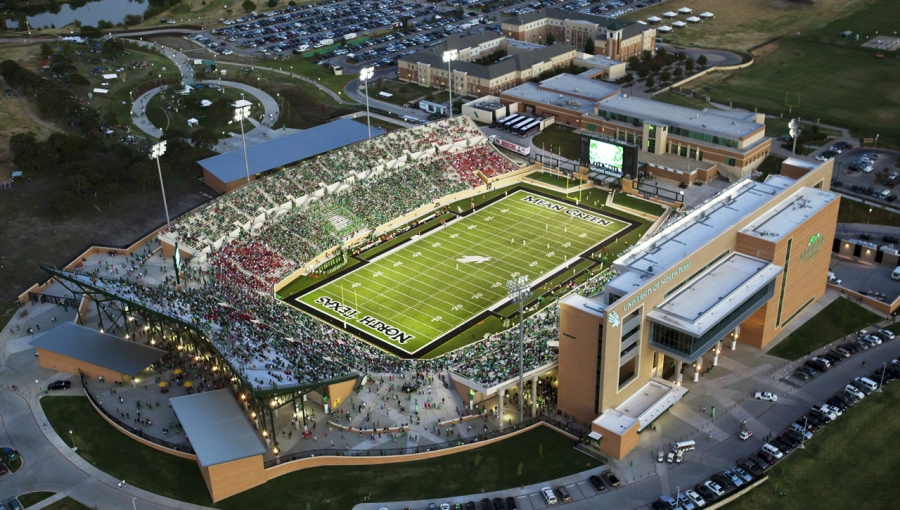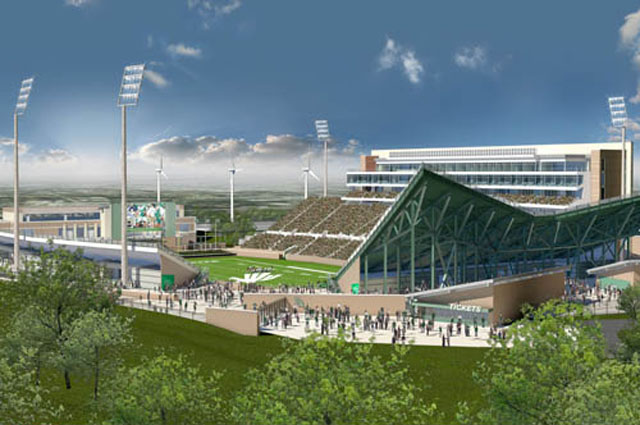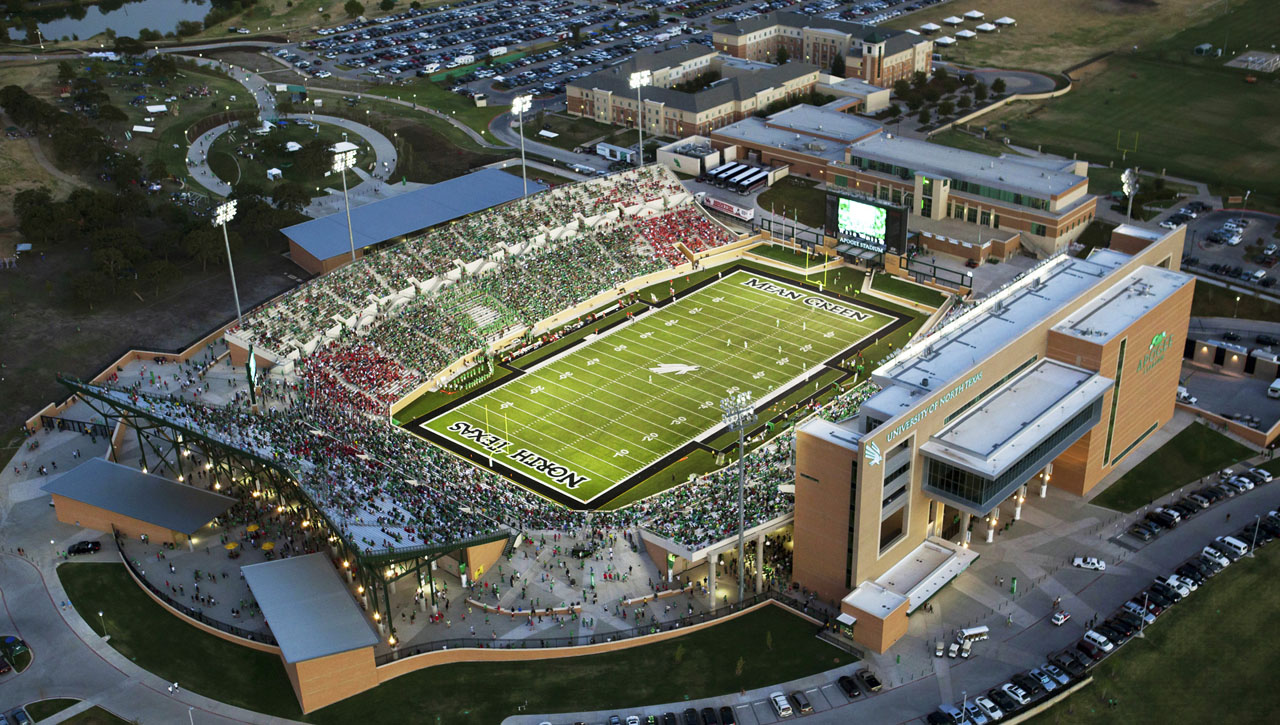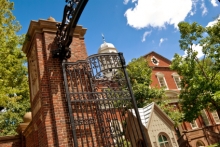Wind Turbines at the University of North Texas Stadium: Symbols of Sustainability
Video
The University of North Texas (UNT) Apogee Stadium is on track to be the first new collegiate venue to make use of on-site, renewable wind power. Its three wind turbines are under construction now; the stadium itself hosted its first game in September 2011.
 Image courtesy of HKS
Image courtesy of HKS
The new stadium, designed by HKS Sports and Entertainment Group, is the centerpiece of Mean Green Village, which is located adjacent to the main campus and houses the university’s athletic facilities and administrative offices. According to Chris Mundell, associate and sustainable design coordinator for HKS DesignGreen, the design team knew from the project’s outset that they wanted to incorporate renewable energy. “We looked at putting solar panels on the east entrance roof – in fact, we made it PV ready in terms of slope and structural capacity,” says Mundell. “Small wind turbines which could be placed on the lights were also considered, but this didn’t turn out to be cost-effective.” The team finally elected to install three larger turbines. Still significantly smaller than wind farm turbines, they are considered community-scale, standing 120’ to their hub and having 30’ blades.
Considering the Neighborhood Environment

These community-scale turbines had several advantages. One of the most significant factors was safety; while turbines have little inherent risk compared to other methods of power generation, the fact that these were to be located on a college campus introduced some additional concerns. “This is something that was considered during design,” says Mundell. “There were stories of turbines attracting kids, and that there had been a fatality. Therefore, we plan on making ground level access difficult.”
The turbines chosen by the designers (manufactured by Northern Power Systems) have other safety features, as well. They are equipped with an automatic shutoff in case of high winds or a power grid shutdown. They will be sunk 40’ below grade to ensure their stability. During the installation phase, a safety zone has been established around the area. Additionally, the turbines are low-maintenance, requiring only once-a-year routine maintenance.
Playing with Practicalities
Noise, as well as safety, was also an initial neighborhood concern. However, according to an HKS press release, the turbines will only produce a noise level of 55 decibels at 40 m (131'), which is comparable to normal conversation between two people. “We built a scale model of the sports facility and the neighborhood,” says Mundell. “We reassured the community that the noise level of the turbines would be similar to other noise in the surroundings.”
The placement of the turbines on the site was determined by practical considerations. They were located about 200' from the edge of the stadium, where wind sweeps up from the south over the practice fields. “This area is also a drainage easement, so nothing else could be built here. That means the turbines aren’t taking up space that could be used for something else, yet 6’ diameter turbine poles won’t interfere with drainage,” says Mundell.
The power generated from the wind turbines will be fed into the grid that serves Mean Green Village. Overall calculations place the offset of energy consumption at 5%–6%, although this number would appear higher, with as much as a 20%–25% offset, if it were not diffused across all of the athletic facilities, explains Mundell. Also, game days are averaged into the calculations, and those days represent a very large power demand. In terms of carbon emissions, the turbines should eliminate 323 metric tons of CO2 being emitted annually.
Assessing Progress
Energy production, carbon reduction statistics, and empirical data will be monitored by a web-based computer system within the facilities building. The turbines will therefore provide useful data for further research and analysis, as well as act as an educational tool.
It was a requirement of UNT that the new construction meet LEED Silver standards, and enough sustainable elements were incorporated into the stadium to enable it to attain LEED Gold. The design team hopes that the installation of the turbines will push the project’s LEED certification up to Platinum.

UNT and the stadium design team hope that the turbines will have a triple benefit: they will serve as a symbol of the university’s commitment to sustainability; they will provide a learning tool for students; and they will make UNT’s Apogee Stadium one of the most energy-efficient stadiums in the country.
As Mundell points out, the stadium has high visibility, not only to the UNT’s students and to Mean Green fans, but to passersby on the contiguous stretch of I-35, which connects the campus to Dallas and Fort Worth. It is hoped that this installation is only the beginning, and more turbines can find their way onto the UNT campus in the near future.

Kristin Dispenza
Kristin graduated from The Ohio State University in 1988 with a B.S. in architecture and a minor in English literature. Afterward, she moved to Seattle, Washington, and began to work as a freelance design journalist, having regular assignments with Seattle’s Daily Journal of Commerce.
After returning to Ohio in 1995, her freelance activities expanded to include writing for trade publications and websites, as well as other forms of electronic media. In 2011, Kristin became the managing editor for Buildipedia.com.
Kristin has been a features writer for Buildipedia.com since January 2010. Some of her articles include:


